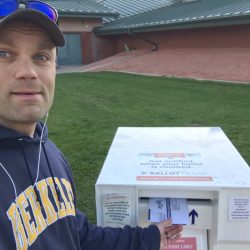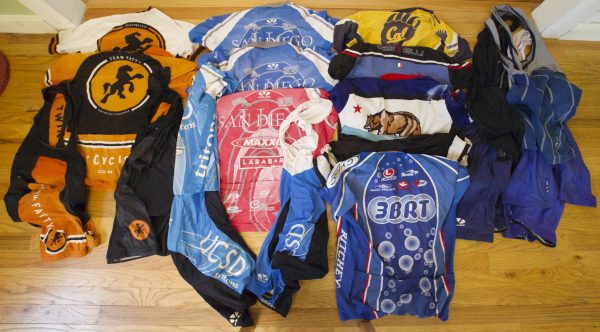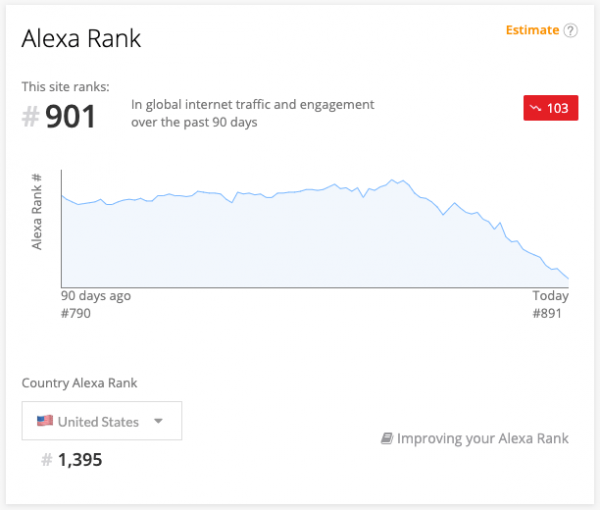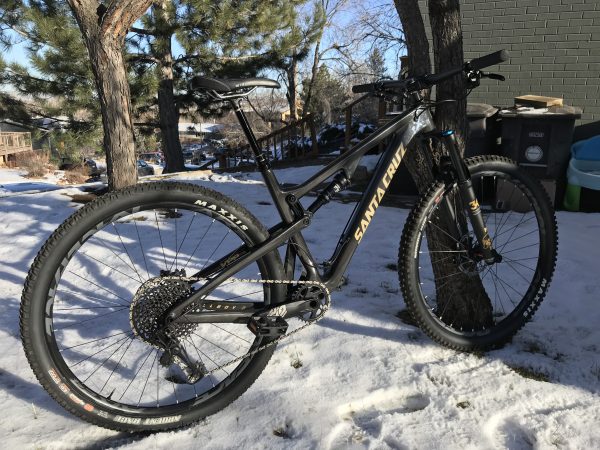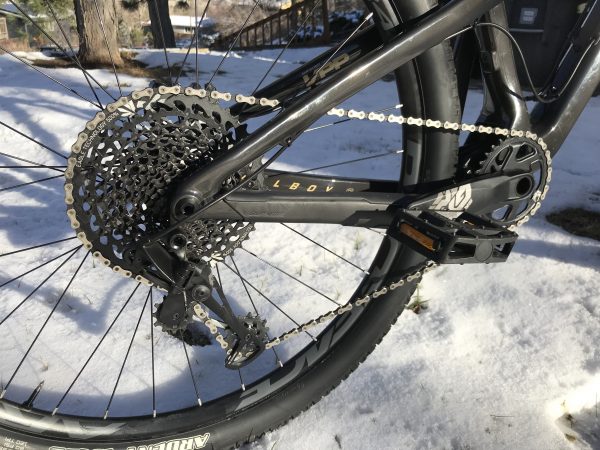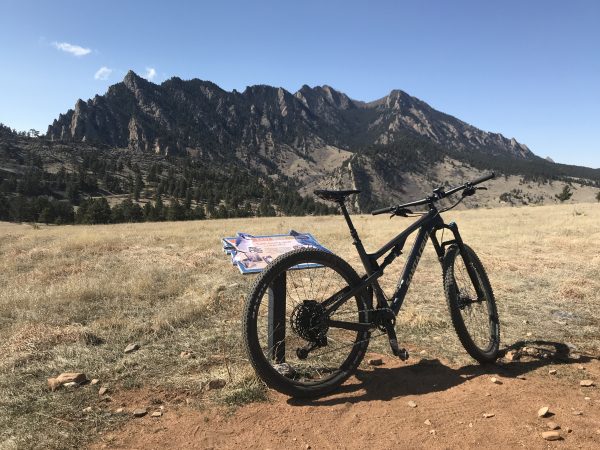Kid Arts
Here are some kid arts! First, we have some art from kid #2, and lower down in a separate is art from kid #1. Don't get too scared when #1's animals open their mouths!





















 more ...
more ...
Tour Pool 2020
As I have since 2007, I am scorekeeping a Tour de France fantasy team pool. Please click here to see how poorly my "Team Florky" is doing as the tour progresses.
more ...Purging The Old Cycling Clothes
Above is a collection of worn-out cycling shorts and jerseys that I am going to get rid of. All the shorts are worn out and uncomfortable. The jerseys have holes or are being held together with safety pins. Basically, I don't see myself wearing any of this ever again.
Judging by how long since I last purged my old cycling clothes, I will do this all over again in about 9 years.
more ...Bye Bye Bitbucket
A few days ago Bitbucket announced that they were ending support for Mercurial and will only support Git starting in about a year. I am a happy Mercurial user. It was the first DVCS system I learned, and have had no reason to switch away from it. Git is more popular than Mercurial, yes, but with useful plugins like hg-git, I never need to use Git even when I am working on a Git repository. Ultimately, the difference between Git and Mercurial is kind of like the difference between Windows and Mac (in that order). One is more popular than the other, but when it comes down to featureset and capabilities, it's very close. Like Windows vs. Mac, the main difference is the experience of using them, and I feel Mercurial is the clear winner.
I only use Bitbucket for their Mercurial support, so I decided to waste no time and abandon them entirely and immediately. In their place I am self-hosting an install of the community (open source) edition of Rhodecode. There are a couple of my repositories publicly viewable here. So far it seems like it has more than enough features to replace Bitbucket.
Update: As of this writing, I turned my self-hosted code server off because I'm lazy.
I feel I should point out that this serves as a reminder to me (and to you, dear reader) that cloud services cannot be relied upon. Companies, even if you are paying them, can stop serving you. This is at least the second time I have had to replace a cloud service with a self-hosted solution. A few years ago I replaced Google Reader with tt-rss. Like I wrote previously, because my new Mercurial hosting service is self-hosted, no one will be taking it away from me. And that is good.
Finally, I don't know why anyone would choose Bitbucket now to host their code repositories. Without Mercurial, all it has it Git, and Github (which has obviously been Git-only from the start) has already won:
more ...Tour de France Pool 2019
As I have since 2007, I am scorekeeping a Tour de France fantasy team pool. Please click here to see how poorly my "Team Florky" is doing as the tour progresses.
more ...Backyard Flowers
This spring we scattered a couple bags of wildflowers all over a part of our yard we knew we couldn't/weren't going to actively garden this year. In previous years, that part of our yard has been mostly weeds and some native grasses. We think that it looks better covered in wildflowers, and so do our local pollinators.
more ...My New MTB
Earlier this year I bought a 2018 Santa Cruz Tallboy C. This is my first full squish mountain bike, and it is awesome. The thing just floats over rocks and is much more forgiving than my old hard tail. It has 29" wheels, a 12 speed cogset, disc brakes, and a dropper post, all of which make the bike completely different from what I'm used to. Comparing times on Strava, I am faster on descents and any reasonably bumpy sections with this bike, which isn't exactly the point of getting a bike like this, but it is nice. There are trails I had stopped riding with my old hard tail because they were not fun that this bike makes fun. And that's the point.
more ...Fast Home Internet
Out of nowhere, earlier this year Centurylink started installing 1 gig symmetric fiber internet infrastructure in our neighborhood. By out of nowhere, I mean that previously they were offering 20 MB DSL service as the best option here, which is horribly uncompetitive with Comcast cable internet that we used to have. But with the 1 gig fiber, Centurylink has a product that I couldn't pass up.
And here is the wonderful result. I've never run a test where both the upload and download are close to 1 gig, but I have seen both get that high separately.
more ...Tour de France 2018 Pool
As ever, please check this link to see how poorly my Tour de France pool team ("Team Florky") is doing. Maybe one of these days I'll actually try to put a team together that performs well.
But probably not.
more ...